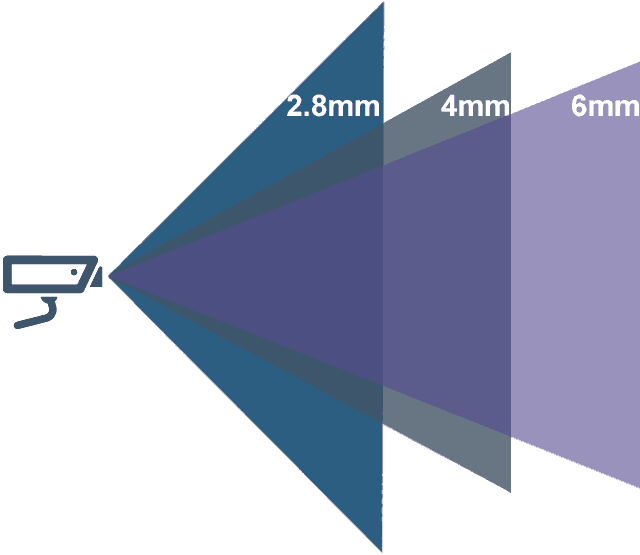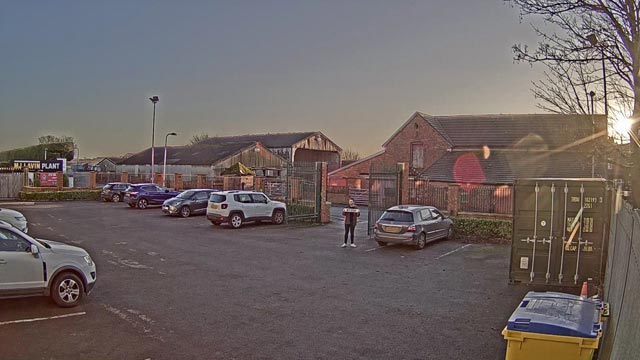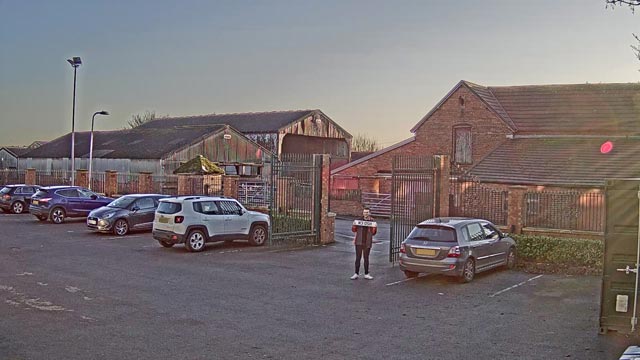If you’re new to security cameras you may think all lenses all the same… but they’re not. This is why choosing the right one is an important consideration, as this impacts your security footage. There are actually a wide variety of lenses which produce different scenes, known as field of view. CCTV camera lenses are designed to address specific surveillance needs.
Before we delve into your different choices, let’s go back to basics on field of view…
What is field of view?
In short, the field of view is the area of coverage that the camera can ‘see’ within a scene. This all depends on the size of the lens – the higher the number, the narrower the view you have.
This simplified diagram below shows you the sort of coverage you expect from different lens sizes.

A word of warning, the field of view alone cannot guarantee you’ll be able to monitor a subject. Other considerations like camera placement and where your subject is, are also important.
What lens do you need?
This is a tricky question to answer as it depends on what you want to monitor. To help you choose, it’s handy to know what sort of view you’ll get from a lens.
Here’s a look at the most common lens types with examples to show you the field of view you’ll get. See lenses for IP cameras here.
2.8mm for a 90° view
With a wide field of view, the 2.8mm lens is a popular choice for static camera surveillance. It can cover a wide area with just one camera.
The 2.8mm lens is very popular indoors. This is because you only need one camera mounted in a corner to monitor a whole room. Though they’re also effective outdoors for areas like train station platforms.
Here’s a sample image of a 2.8mm view taken from an Axis P1455-LE.

If you’re looking for a wider field of view, then 180° or 360° panoramic cameras are available. These models are ideal to provide an overview of your location. Please note with ultra-wide cameras there’s often some warping of the image.
4mm for a 60° view
Although it has more clarity at a further distance, the 4mm lens shows a similar scene to the 2.8mm. The main difference is the reduced angle of view which gives the illusion that objects are closer to the camera.
A 4mm lens is useful for detection & identification.

This lens is often used in outdoor areas like car parks, where detail is important. It’s also helpful when you want a narrower view to avoid monitoring unnecessary areas – an aisle in the supermarket, for example.
6mm for a 45° telephoto view
The 6mm lens gives a narrow, but detailed distance view. A telephoto lens can also be used to monitor a specific object like tills.
Customers often use this lens for monitoring the entrance to a car park, or a doorway. It’s also useful for a corridor, especially when combined with corridor format/view technology.
Here’s an example of a 6mm lens.

Footage from three lens sizes
The video below shows the above three lens sizes, with the subject at a 16m distance from the camera.

What type of camera has which lens?
You’ll find these lenses on most of the cameras we stock in-store.
Static cameras have a fixed lens, while a varifocal lens can be adjusted during installation. Pan tilt zoom models, also have a lens range and the view can be adjusted as required.
You may want to read our article on the difference between fixed and varifocal cameras.
Summary
Your choice of camera field of view impacts what you’re able to monitor. For example, a 2.8mm lens produces a wide view which is great for general surveillance. While a narrower, telephoto lens is more suitable for looking at specific objects.
Hopefully, this CCTV lens guide has helped you to decide which would be most suitable to monitor your site.



